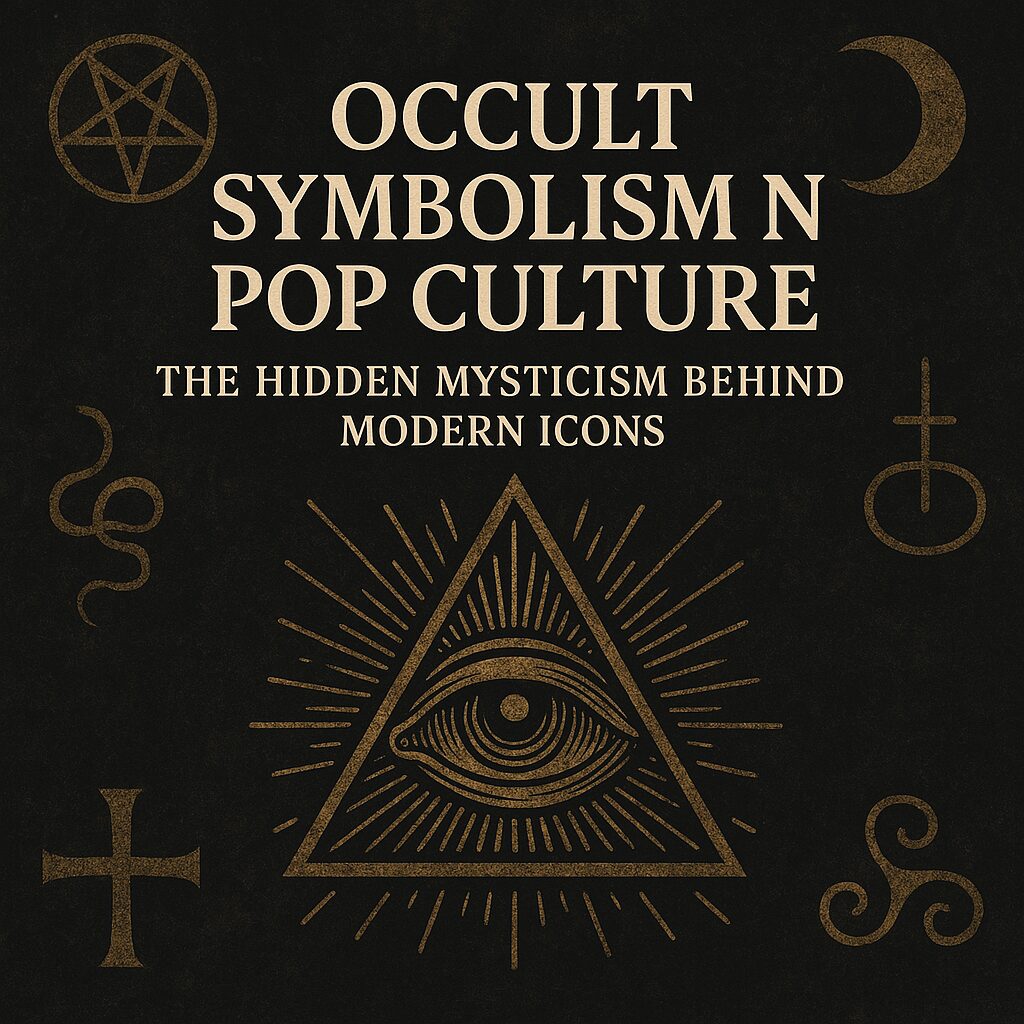In an age where spectacle reigns, popular culture often wears the mask of entertainment—colorful, loud, and disposable. Yet beneath the glossy surface, symbols echo ancient truths. From music videos to superhero films, the threads of occult mysticism weave through the fabric of modern media, whispering esoteric meanings to those with eyes to see.
The Eye That Watches
Few symbols are as ubiquitous—and misunderstood—as the “All-Seeing Eye.” Sometimes encased in a pyramid, sometimes free-floating in a surrealist haze, it appears in everything from dollar bills to album covers. It is often misattributed to conspiracies, yet its roots lie deep in Hermeticism, Freemasonry, and the Egyptian Eye of Horus. In its true form, it represents divine omniscience, the opening of the third eye, and the realization of inner gnosis. That it surfaces repeatedly in pop culture—on stage backdrops, film posters, and digital art—is no accident. The subconscious recognizes the Eye as a beacon of awareness, a symbol of the awakened observer.
The Hero’s Journey and the Fool’s Path
Modern cinema thrives on archetypes that mirror Tarot’s major arcana. The reluctant hero—like Luke Skywalker, Neo, or Harry Potter—mirrors the Fool’s Journey through symbolic death and rebirth. The Magician appears as the mentor or guide: Gandalf, Morpheus, or Dumbledore, who possess secret knowledge and open portals to transformation. These characters and plotlines are not new. They are mythic echoes of ancient mystical narratives.
Is this storytelling convenience—or ritual repetition? The line is thin.
Fashion as Ritual Armor
The runway and the red carpet are altars. Celebrities, the modern pantheon of Olympus, don robes stitched with symbols: serpents, inverted pentacles, astrological signs, crosses wrapped in thorns. These are not merely aesthetic decisions. Fashion in elite culture often operates like ritual attire—projecting energies, invoking archetypes, or initiating viewers into subconscious alignments.
Consider Lady Gaga’s performance art, Beyoncé’s references to Oshun, or Kanye West’s use of Christian and esoteric imagery. These choices, conscious or not, blur the boundary between performance and invocation.
The Music Video as Sigil
In a ritual context, a sigil is a symbol charged with intention. Music videos—particularly those from artists like FKA twigs, The Weeknd, Grimes, or even Madonna—often play like moving sigils. Scenes are laden with layered imagery: serpents and veils, moons and fire, thresholds and ascensions. Repeated viewings, rhythmic chants, hypnotic beats—these elements operate much like magical workings. They alter consciousness.
Pop culture, then, becomes the new grimoire.
Why It Matters
To dismiss the occult as mere fantasy is to misunderstand its purpose. The occult is not about secrets—it is about unveiling. It operates through symbols because symbols are timeless. They bypass logic and speak directly to the soul.
That the esoteric keeps reappearing in mainstream media is no accident. It is a mirror of collective yearning. A culture divorced from spirit will unconsciously seek to resurrect it—even if through mass-produced myths.
To watch with open eyes is to begin decoding the dream.
